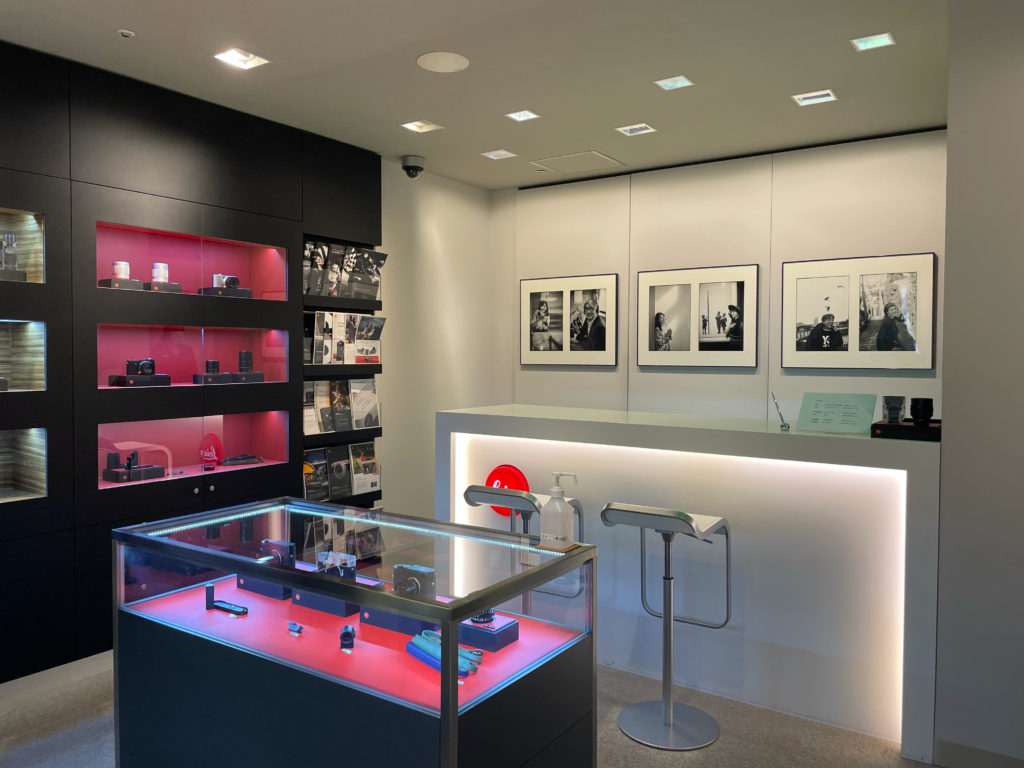

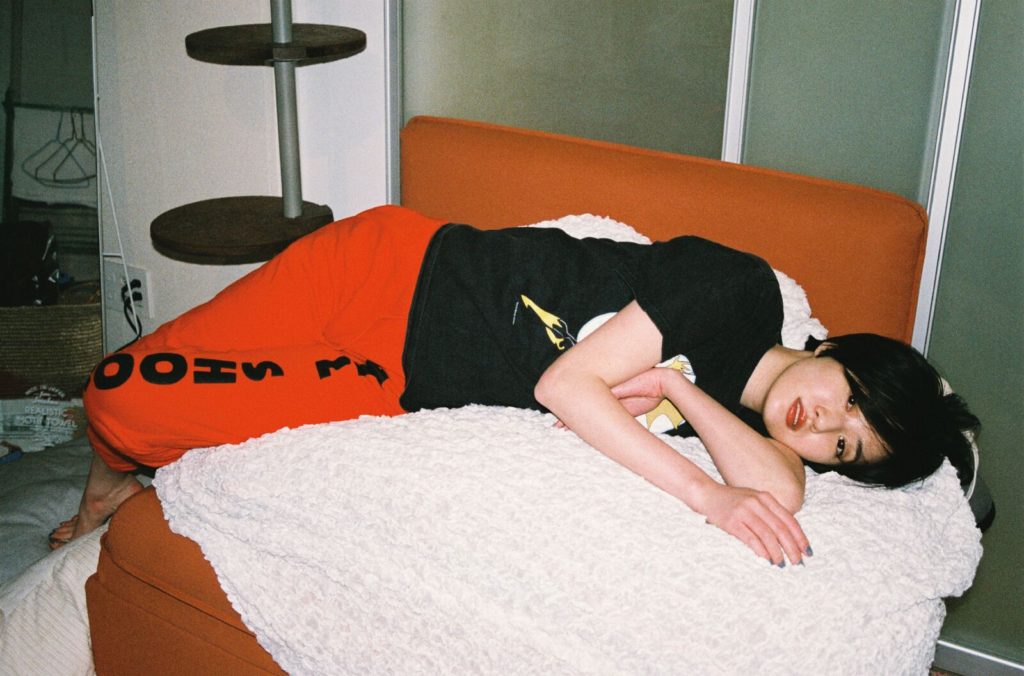
Interview with Emily Ashcroft -“Tokyo Girls”
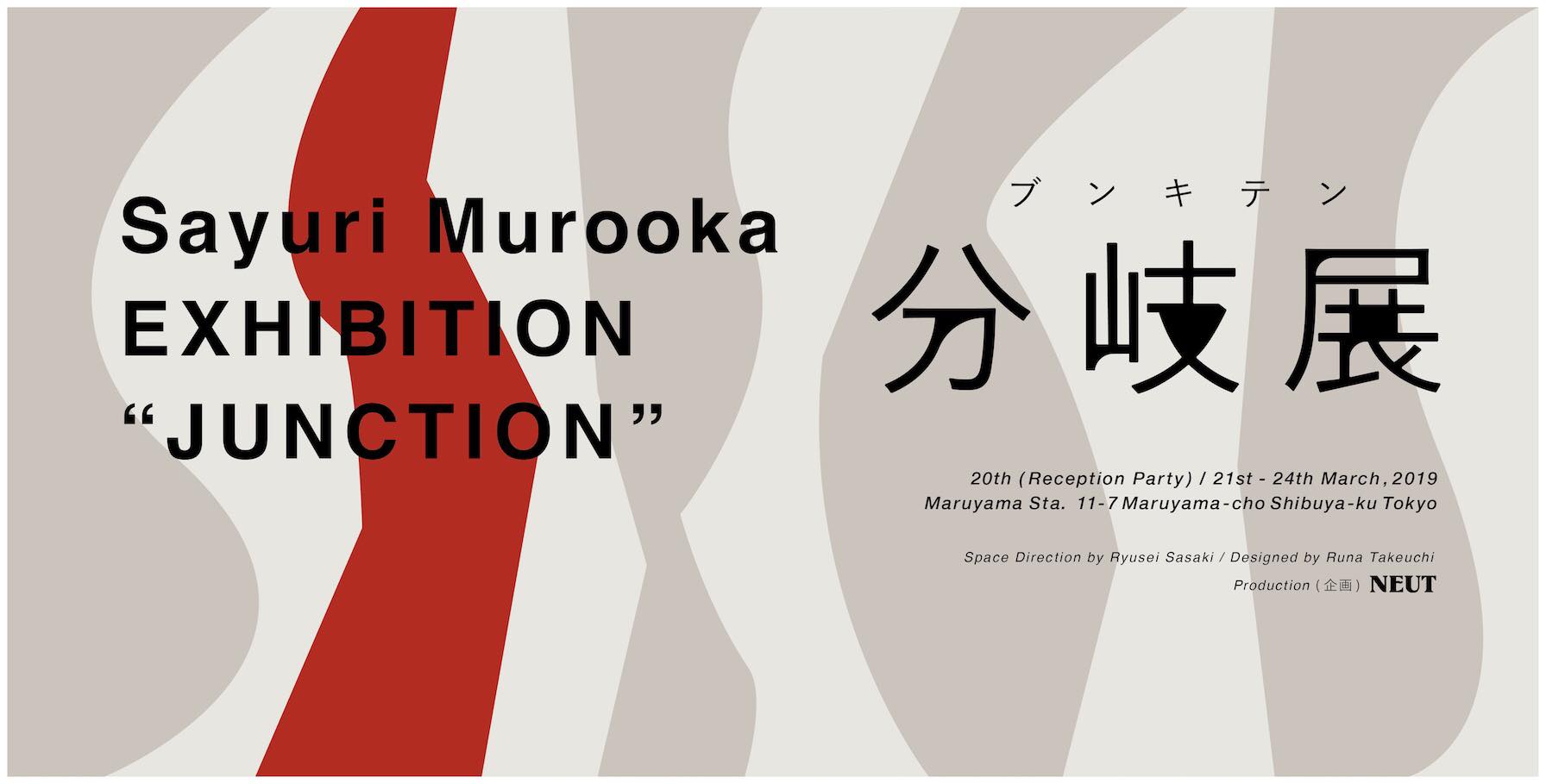
Sayuri Murooka Exhibition “Junction”
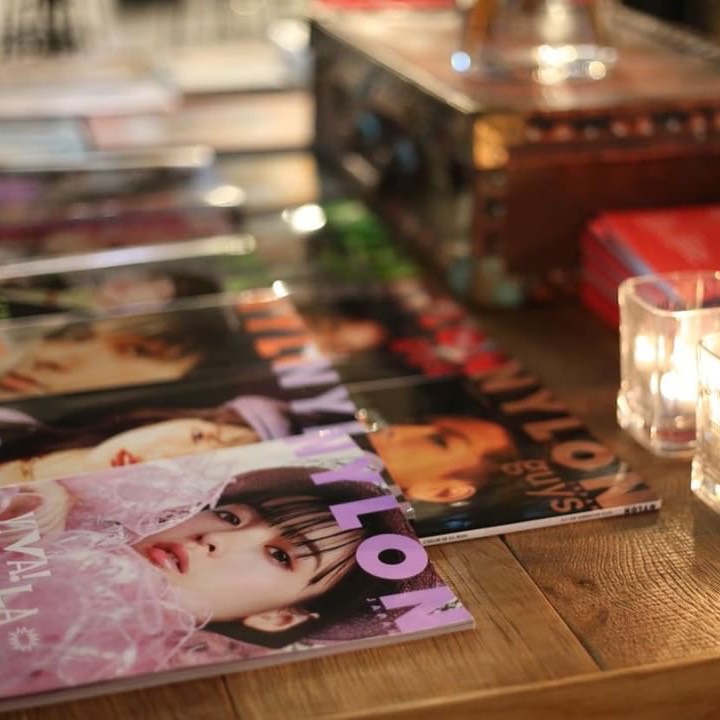
Interview: Mariko Idehara
Translation: Stefania Maria Lehman
Photo: Reina Tokonami
Edit: Yuka Shimayoshi
ファッション界・写真界において欠かせない存在である写真家・鈴木親。彼が語る言葉には、クリエイティブを創る側の責任と熱意を感じた。
オリジナリティはどのようにして生まれるかといった問いでは、トップフォトグラファーは模写のようなことをしていると伺いました。なにかその時の教えなどありますか?
「20年以上前のリファレンスから探しなさい」という教えがあってね。最近のものだったら、その人が存命かもしれない。その人と同じことやるんじゃ、失礼だし本当に物まねになっちゃう。だけど20年以上前の写真を元にいまのことをやったら、機材も違うし、場所も街もモデルも変わっているじゃないですか。ヘアーとかファッションもそう。20年以上前のものならみんなそれをリスペクトであると感じると思う。古いものを20年経てば新しく感じたり、昔を知っている人なら懐かしむことができる。
よく見かける、大きな鏡を持って街とかで撮る作品は、ヴィヴィアン・サッセンがやってるんだけど、それは元々ウィリアム・クラインが街中の撮影でやってた。彼は60年代のレジェンドだから、それを今風に女性が撮る、っていったら新しいやり方かもしれないじゃないですか。それが面白いってなったんです。リスペクトがあったうえで、自分のスタイルを積み重ねていくことが大事です。
海外の方って自分のスタイルが強くて、日本の雑誌は海外からの影響を受けているものが多いと思うんですけど、そこにはどんな違いがあると思われますか?
ヨーロッパだと許してもらえない。古いことを知ってる人が多いから、そっくりなものを出しても編集者が突っぱねる。誰が最初にやったっていうのは視る側からするとどうでもいいんだけど、創ってる側は認識しないと怖いですね。認識しないと、誰がやったとか関係なくて、先に取ったもの勝ちになるじゃないですか。でもそれを続けていくと日本からのオリジナリティが出ていかなくなる。
いろんな人のものをみて自分なりの考え方で出ていけば、どんどん出ていけると思うんだけど、そっと物まねをしていたら、その人のためにもならないですよね。創ってる側の見る目があったら、買う側、見る側の見る目があれば、作家とかデザイナーも成長していくと思います。
編集者にも責任があるということですね。
編集者も買う側も。東京はファッションの財産がすごいあると思う。例えば簡単に言うと、ストリートがラグジュアリーを考えるとか。裏原からの考えだと思うんです。すごく着飾るお金持ちか、お金がなくて服に気を使わない人のどちらかしかいなかったけど、日本は中間層がたくさんいて、いま世界的に中間層の人が服を買っているのは日本が最初なのでは。
言葉を使って、誰がこれをしてっていうのを明確にしていけば、やがて知的財産となって日本はすごく強くなれると思う。例えばヴィンテージとか、日本のほうが性能の良いものをすぐ探せる。クロエ・セヴィニーがこの前日本に来たとき、ヴィヴィアン・ウエストウッドの古着屋に行きたいと原宿へ向かったんです。普通に考えたらロンドンのほうがあると思うじゃないですか。だけど日本だと物の集め方がすごく良くて、それなのにそこで満足しちゃってる。誰かがそういうのを言葉にして主張しないと、いい加減になってしまう。アイデアのソースだけになっちゃう。自分たちがアイデアのソースになるから、自分たちも人からアイデアのソースをとってもいい、という考えになっていってしまう。だからちゃんと誰かのことを言葉にしていかないと。
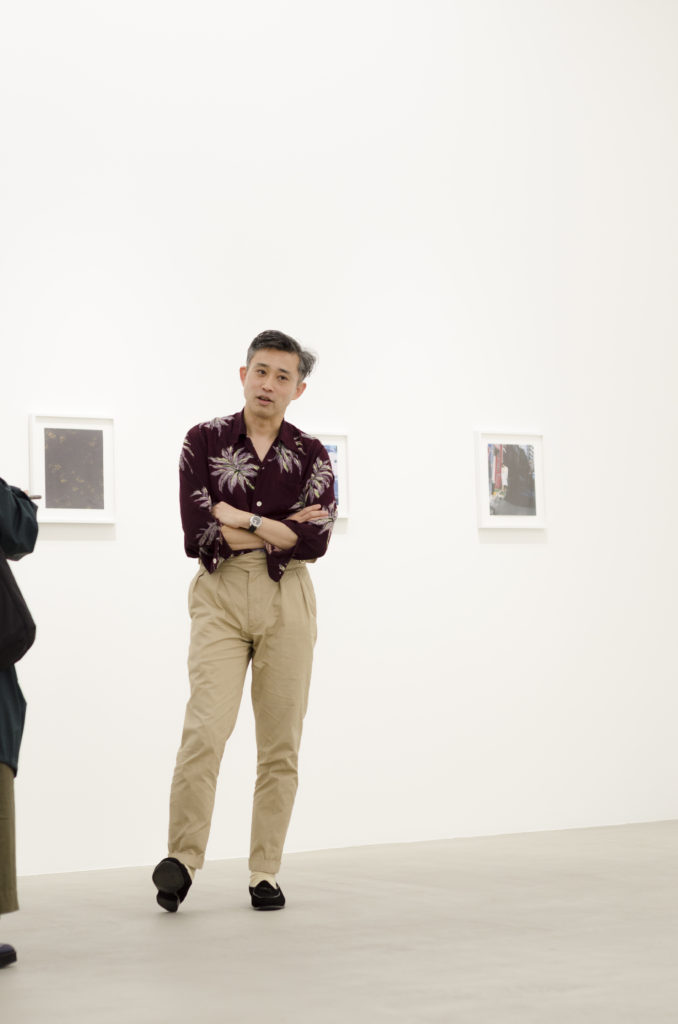
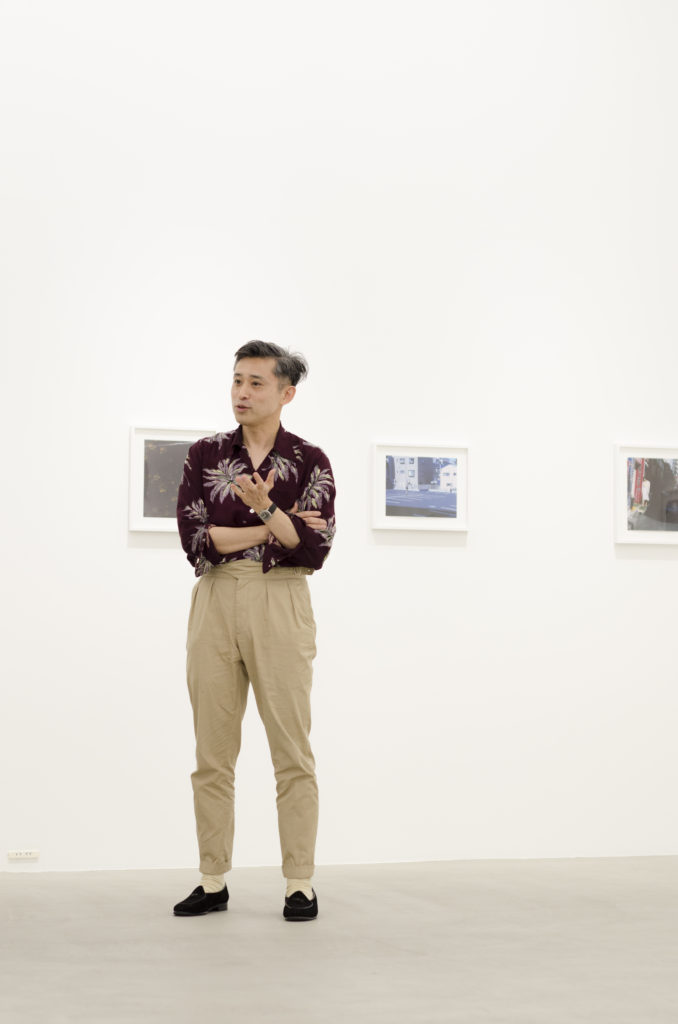
被写体にはどのようなことを求めているのでしょうか。
一番は、有名じゃない子、出来上がってないとか、もともとポテンシャルはあるけど発揮できていないひとが好きで。もともと何かあるけど、最後バンっといけないひと。写真だったら一瞬の判断で出来るから、そこで堂々としてる子は強いかなと。動じない気持ちがあるかないかっていうのは大きいと思います。有名になったときに、単純に言えば自分の写真の価値みたいなものがわかる。まだ無名くらいのひとが被写体で、その写真一枚でいろんな人がぶわーっときたら、その写真がよかったからかなって思う。そういうのがすごい好きで。
大きいところでやったらそれでもう完結する可能性がある。有名なひとも無名なひとも混ぜたらなんかよくわかんなくなるし、それが写真のいいところだと思う。フラットに並べていくと一番写真らしい。それがもう一個の副産物として、写真に出てきたひとがそれをきっかけに有名になったら面白い。
写真の役目として、芸術性はもちろんあるけど、記録性もある。洋服とか写真って一番身近な芸術ですよね、みんなで手をだせる。みんなで出来るけど、なにが違うかっていうと、写真が出たときは何を入れ込むかっていう意図があって、10年経ったときには写真としてきれい、っていうのが理想。
撮影をするなかで気を付けていることなどありますか?
一切二人きりになったことがない。周りがいてくれたほうが、ちょっとフェイクになる。あまりにも近すぎるとほんとにプライベートな感じに。いっぱいひとがいるのにあえて指示しなかったりしてみる。指示されないとちょっと困るじゃないですか。その困ってるときのタイミングがすき。こうしてああしてっていうよりは、なんとなく近寄ってあとはほっておくとか。ほんとにセクシーにやってくれっていったら完全なフェイク。セクシーにしてってやっていけばやっていくほど嘘っぽくなると思う、嘘っていう世界の中で真実を撮った方が、本当なのかなって。
撮影で面白いと思うのはどんなときですか?
どれもすごいイタズラしてますね、からかっている。僕が一番楽しんで撮影していると思う。だいたい撮影も早いです。余分なことはしない。
撮っていくと自分が考えていることを追っていっちゃう。ずっと見てるひとのこと撮っていくといい部分って絶対わかるじゃないですか、だからそれがどこかで撮れるまで撮っちゃう。コミュニケーションをとって撮っていくっていうよりは、パッと見でいいところだけ拾って目にした方がいいっていう。すごく有名な人って自分のパブリックな顔があるじゃないですか、でも早く撮ったら自分のそのパブリックなところにいくまでの顔が撮れる。あいまいな、その人だけどちょっとその人じゃないみたいな。数分で。
「写真や洋服は芸術」と先ほどおっしゃっていましたが、鈴木さんにとってアートとはどのようなものでしょう。
根本的に必要だと思うのは、社会は全部変えられないけど、こういう違う考え方もあるっていう提供はすごく面白いと思う。僕らが当たり前に見ているものに対しての疑問だとか。写真とかファッションの価値観の思い込み、可能性を探るとか。メンズにスカートを履かせてみてもいいんじゃないの、とか。既存の社会の何かがわからないと変えられない。古いものとか古い写真を学んだうえで今の社会のシステムにはめ込んで新しい価値観を考える。
アートとファッションは対立しているという現代の見解にはどう思われますか?
一緒になりづらいですよね。でも一番身近なアートはファッションだと思う。カメラは、持ちたい人しか持たない、だけど服を着ないひとはいない。たぶん食と一緒。生活の中にあるプラスアルファじゃないですか、ただ着るっていったらなんでもいいわけでしょう。機能としては一緒だけど、本人の気持ち的にどっちを選ぶかっていう。その人なりの個性が出てくる。なにを選ぶかとか誰が作ってるとかっていうのが、考えていくとすごく重要になっていくじゃないですか。それをみたとき、ファッションも一緒だなと。写真も一番身近なアート、押せば映るし、とくにラッキーが起こりやすいものだから、絵よりも、偶然にいいのが撮れたりするじゃないですか。写真の文化はそこがすごくいいところであって、立派にしていけばいくほど写真じゃなくなっていっちゃうときも、ありますよね。本当に一番いいなと思うのは、家族のスナップだとか。たまに保険のCMで、いろんなひとが撮った子供の写真とかあるじゃないですか、あれいいですよね。子供からの目線だったりするから、やっぱりそういうのって家族じゃないと撮れないと思うし。
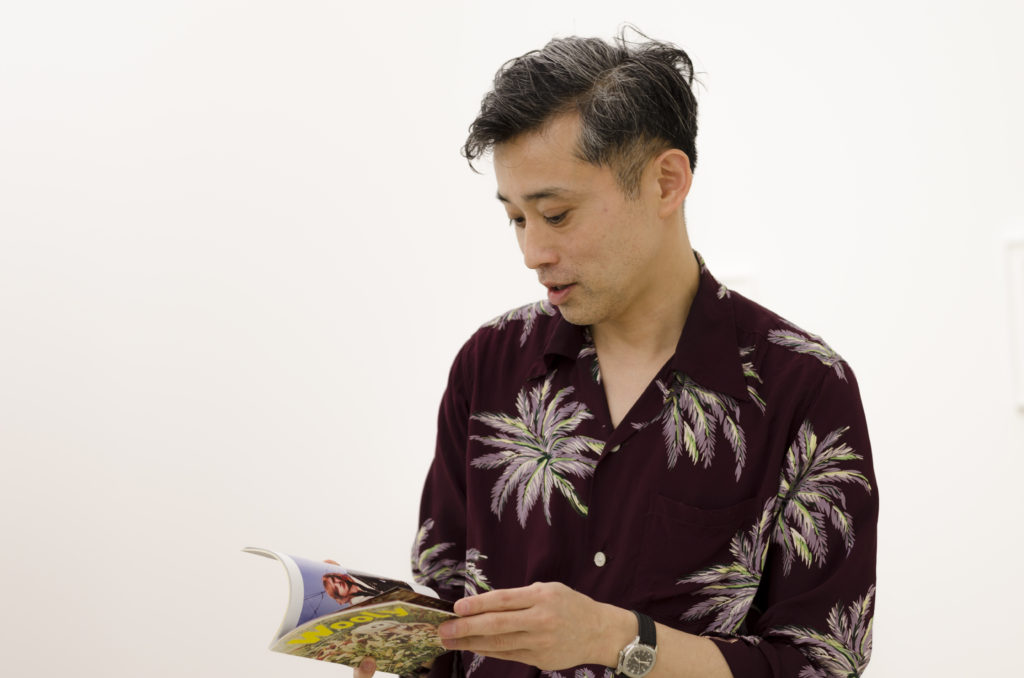
最後に、鈴木さんにとって、東京はどう映りますか?
正直良さはわからない(笑) 逆説的な考えで、フランスに住んでいたときにすごくお世話になった編集者の方が、「一年いてなにか作品が撮れたか」って聞いてきたので、いや撮ってないと答えたら、それはあなたのことを信用できるひとつのことだ、と。なぜかというと、一年しかいなかったのにパリで作品なんかつくれるわけがない、ずっと住んでたら撮れるかもしれないけど、一年でそんなにいいものが撮れるなんて、嘘っぽい。だから撮れなかったっていう方が信用できるって。だから僕は日本で育ってきたから、逆に日本のいいところが、見方が変われば気づいたらでてくる。電線とか看板とか。あと、ただ単に日本っぽさを追求しちゃうと伝わりづらい。ワールドワイドにひとにみせていくときに、最低限の基準が欧米、ヨーロッパの視点というか。その欧米の視点にしたうえで、日本に住んでいる人が日本らしさをだしたら多分すごく完璧だと思うんですよ。住んでいるひとには住んでいる人の役目があるから。それはどこでもないきれいな東京の場所、というのがいいから。
◆鈴木親
1972年生まれ。
1996年渡仏、雑誌Purpleにて写真家としてのキャリアをスタート。 Purple(仏)、ID(英)、DAZED&CONFUSED(英)、CODE(蘭)、Hobo(加)、IANN(韓)、honeyee.com(日本)、GQ(日本)、commons&sense(日)、LIBERTINE/DUNE 等の国内外の雑誌から、Issey Miyake、United Bamboo、Toga等のWorld Campaign。
A photographer, Chikashi Suzuki, possesses an irreplaceable presence to the worlds of fashion and Photography.
The sense responsibility and enthusiasm was deeply felt through his creative soul.
When we asked about originality, you mentioned that what the top photographers do is something like copying. Is there a general rule you were taught about this?
There is a general rule that you must “reference something that’s over 20 years old” If you pick a recent work, the original photographer might still be alive. If that’s the case, doing the same thing would be rude and would really just be mere copying. But if you’re referencing something that’s over 20 years old in the present moment, the equipment is different, the location, town, and model look very different. The hairstyle and fashion also look different. Recreating something that’s over 20 years old is usually taken as respect. Also, when things are that old, sometimes they start to look new again, or people who lived in that time can feel nostalgic.
For example, Viviane Sassen does these works using big mirrors in the streets, but that’s something William Klein did originally. He was a legend in the 1960s, so a woman taking pictures in his style in a contemporary context is, in a way, creating something new. It’s important to build up your own style based on respect.
It seems that other countries have stronger individual styles so Japanese magazines often take ideas from them. What do you think is the difference?
There are some things that wouldn’t be accepted in Europe. Because people know a lot about old things, if you just show somethings that’s exactly the same, the editors would dismiss you. The audience might not care who the first person to do it was, but as a creator you have to be careful. If people aren’t careful about this, it’ll just be like “whoever takes it first wins”. If Japan continues to have this kind of attitude, it would start to lose it’s sense of originality.
I think you can be very productive if you’re thinking in your own way while observing what others are doing, but if you’re just copying exactly what someone else did, it’s no good for yourself. If the creators, consumers, audience all have a keen eye, writers and designers can grow their talents.
That means editors are also responsible?
Editors and consumers. I think Tokyo has a lot of assets for fashion. Like streets thinking about luxuries. I guess it’s a way of thinking that comes from Ura-hara culture. There used to either be rich people who dress really lavishly or poor people who don’t care about what they wear, but in Japan there’s a big middle class. I feel like Japan stands out in the world for its consumption of fashion among the middle class. I feel like Japan can develop great conceptual assets by using more words to clarify things.
For example, you can find good quality vintage products easily in Japan. When Chloe Sevigny came to Japan, she went to Harajuku because she wanted to go to the Vivienne Westwood thrift shop. You might think London would be better to get that kind of stuff, but Japanese stores are actually good at collecting items, but they don’t really try to establish that as their advantage. Someone needs to claim it or otherwise it gets lost, or it ends up just as an idea. So you have to put it into words.


Is there something you ask for your subjects?
The kind of models I like to work with are people who aren’t famous, people who are still “incomplete” or people who have potential but haven’t used that to the most yet. The kind of people who have something, but haven’t quite figured it out yet. Also, confidence is important because photos determine things in the moment. So I prefer people who stand firmly.
When you’re famous, you know the value of your photo to put it simply. If the model’s still unknown and there’s still people liking that picture, it means the photo itself is good, so I like that.
Sometimes a big exhibition does the job. There’s famous people and unknown people all mixed together so it doesn’t matter anymore. Lining all of that together horizontally is the best way of presenting photography. If the person happens to become famous because of the photo, that’s also pretty interesting.
The role of photography is not only art but also recording. Fashion and photography are art forms that are very close to us, anyone can reach out to it, but the difference is that the ideal photos are ones that have the intention of what to bring in, and look pretty as a picture 10 years later.
Is there something you keep in mind when you’re taking photos?
I’ve never been alone with the model. It looks all a bit more “fake” when there’s other people around. When it’s too intimate, it looks a bit too private. I sometimes intentionally not give any instructions to the model even when there’s a lot of people around. You see, you feel a bit puzzled when there’s no instructions. I like that moments when they look puzzled. Rather than tell them to do this and that, sometimes I just approach them and leave them. If I tell them “try to look sexy” or something it ends up looking completely fake. When I tell them more, it ends up looking more and more like a lie. I feel like it’s more genuine to take photos of the realities in the world of a lie.
Is there anything fun while you’re shooting?
I do a lot of pranks, I like to tease people. I feel like I’m enjoying the photo shoots the most. They’re also very quick, because I don’t do anything unnecessary. When I’m taking photos I start to pursue my thoughts. When I’m taking pictures looking at one person for a long time, I start to see the nice parts about that person, so I would keep taking pictures of that. I’d stay its more about picking up things instantly than doing long exchanges. Famous people always have a public face, but if you just start taking photos instantly you can see the stages before they get to the public face. Like an ambiguous stage, it looks like that person, but not really… kind of. In a few minutes.
You mentioned earlier that “photography and fashion are art”, but what is art for you?
I feel like the most fundamental thing is to accept that you can’t change society completely, but to provide different ideas. For example, questioning things that we take for granted. Pointing out biases or prejudices we have about photography and fashion, and exploring alternatives. Like “how about letting men wear skirts?” or something. You can’t change things unless you understand the current society. It’s important to learn old things, old photography and place them into the current systems to think of new values.
What do you think of the general perception today that art and fashion are opposed to each other?
It is difficult to put them together. But I think the most accessible type of art is fashion. Cameras are only held by people who want to, but clothes are worn by everyone. It’s probably the same as food. It’s just an additional factor in our everyday life, it’s not like we just wear whatever. It’s not just about the function, but also about personal preferences. It shows your personality. It’s more important when you think about what you choose, who made it. So in that sense I feel like fashion is the same. Photography is also an art form that’s close to us, you get a picture when you press the button. Also you can get lucky, unlike drawing or painting, you can get a nice picture by chance. I think that’s the nice thing about photography, when you try make it so grand it ends up not really looking like a photo. I also feel like best types of photos are portraits of families. You sometimes see these insurance commercials that show photos of children taken by lots of people, I really like those. Sometimes it’s from the perspective of the child, those are things you can only take as a family.

Lastly, how would you, Mr.Suzuki, capture Tokyo?
Honestly, I really don’t know (Laughs) When I was living in France, an editor who I really respected had asked me “What kind of works have you taken in this last year?” I had answered “Oh, I haven’t really taken anything worthy of anything being called ‘work’”.
The reason why is because although I had only lived in Paris for a year, I felt as if I wasn’t given the appropriate amount of time to be able to take pictures of anything important, it would have felt fake. That’s why it would have been more credible to say I wouldn’t have been able to shoot anything. Since I grew up in Japan, I’ve come to notice that the way I view things in Japan – particularly the good things, has changed. Things I once saw as trivial such as electric wires, and signs. Afterwards, it becomes hard to tell what it means to pursue something that’s purely ‘Japanese.” When you look from a worldwide perspective, the minimum standard is through the viewpoint of Europe or the United States. Based through this perspective, I would say it would be nice if people who are living in Japan could understand and reveal what true ‘Japanese-ness’ is. The people who live here serve their own role, and that is why it’s great that there is no beautiful place quite like Tokyo.
◆Chikashi Suzuki
Born in 1972.
Went to France in 1996 and started a career as a photographer at a magazine “Purple”. He has shot for various magazines such as Purple(France), I-D(UK), DAZED&CONFUSED(UK), CODE(Netherlands), Hobo(Canada), IANN(South-Korea), honeyee.com(Japan), GQ(Japan), commons&sense(Japan), LIBERTINE/DUNE, and world campaigns of Issey Miyake, United Bamboo, Toga etc.



